As an Amazon Associate I earn from qualifying purchases. Please read the disclaimer for more info.
A chance to sample the fruits of Vietnam should be high on any to-do list when visiting the country. Vietnamese fruit is grown all over the country due to its diverse climate, with a majority coming from the food bowl of Vietnam, the Mekong Delta. The tropical fruits in Vietnam are sold seasonally, resulting in ripe and fresh fruit all year-round. Vietnamese fruits are sold in local markets, street-side stalls, and even mobile carts being pushed around the busy streets of Vietnam.
And at a dollar or two a kilo for most Vietnamese fruits, there’s no reason not to give the tasty tropical treats a try.
Vietnam Fruits and how to eat them.
Table of Contents
- Vietnam Fruits and how to eat them.
- Longan (Nhan)
- Lychee (Vai)
- Rambutan (Chom Chom)
- Pomelo (Buoi)
- Dragon Fruit (Thanh Long)
- Jackfruit (Mit)
- Star Apple (Vu Sua)
- Mangosteen (Mang Cut)
- Sapodilla (Sa Po Che)
- Papaya (Du Du)
- Star Fruit (Trai Khe)
- Guava (Oi)
- Passion Fruit (Dao Tien)
- Durian (Sau Rieng)
- Rose Apple (Qua Roi in the north, Qua Man in the south)
- Mangoes (Xoai)
- Coconut (Dua)
- Breadfruit (Sake)
- Pineapples (Dua in the north, Thom in the south)
- Soursop (Mang Cau Xiem)
- Avocado (Bo)
- Banana (Chuoi)
- Persimmon (Hong)
- Mandarin (Quyt)
- Soursop / Custard Apple (Mang Cau Ta)
- Langsat (Bon Bon)
- Orange (Cam Sanh)
- Conclusion to the Fruits of Vietnam
Longan (Nhan)
Longan is one of the main tropical fruits of Vietnam, and when in season, the large longan trees filled with bright orange fruit make for an impressive sight.
Longans are sweet, juicy, and very addictive.
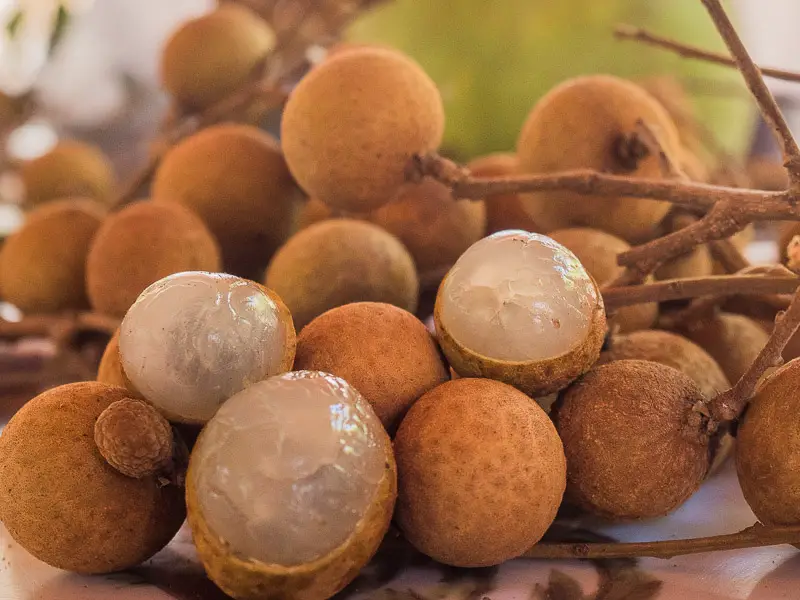
How to eat Longan
To eat longan, crack then peel off the thin brown skin which surrounds the edible translucent fruit, and discard the seed.
Enjoy on its own or as part of a local dessert such as “che hat sen nhan long”, where dried longans are served with lotus leaves, or a longan ice cream.
Lychee (Vai)
A native tropical fruit from China, lychees have been cultivated in Vietnam for a long time, and when in season, the streets of Bac Giang, where they are grown, take on another worldly look, as the streets fill with carts stacked with the sweet fruit on their way to be packed and distributed throughout the country and beyond.
Surrounded by a thin shell, the lychee fruit inside is off-white, juicy and sweet, with a brown seed in the middle.
Lychees can be eaten on their own as a snack, however, there are myriad ways to enjoy this sweet fruit by way of desserts and drinks including this delicious Lychee Martini. or combine lychee juice with watermelon for this refreshing sparkling watermelon and lychee cocktail.
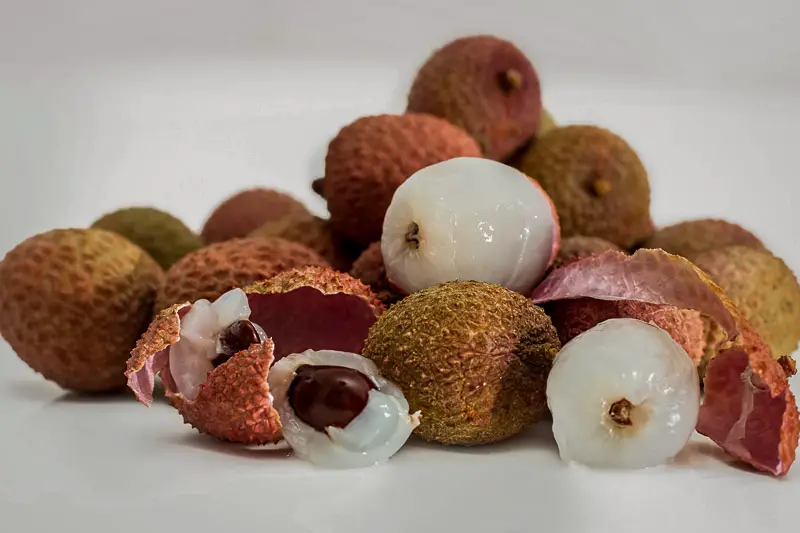
How to eat Lychee
The edible part of the lychee is the off-white flesh. Lychees are eaten by removing the outer shell and eating the flesh from around the seed, which is then discarded.
Rambutan (Chom Chom)
The look of Rambutan fruit is unique in that they have a “hairy” covering to their skin. In fact, in Vietnam, they call it the fruit chom chom, which means messy hair. The fruit is a mild sweet and sour flavour and a juicy white translucent white flesh.
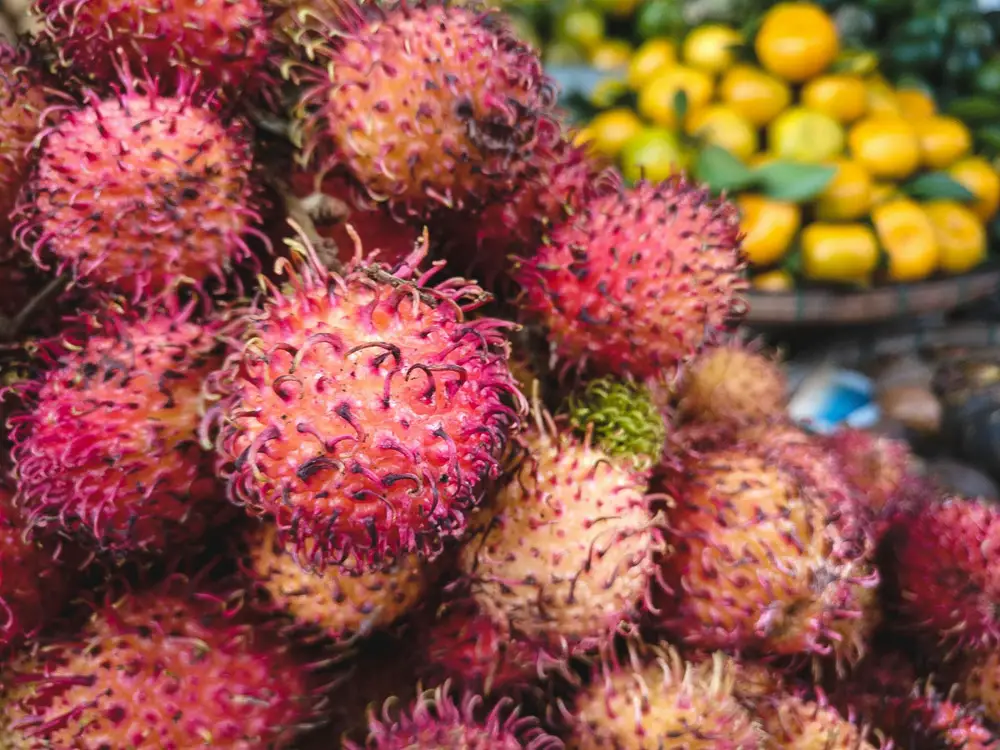
How to eat Rambutan
To eat a rambutan, first pinch the skin until it splits then remove it, revealing the white translucent flesh to eat.
See the Rambutan vs Lychee vs Longan comparison here.
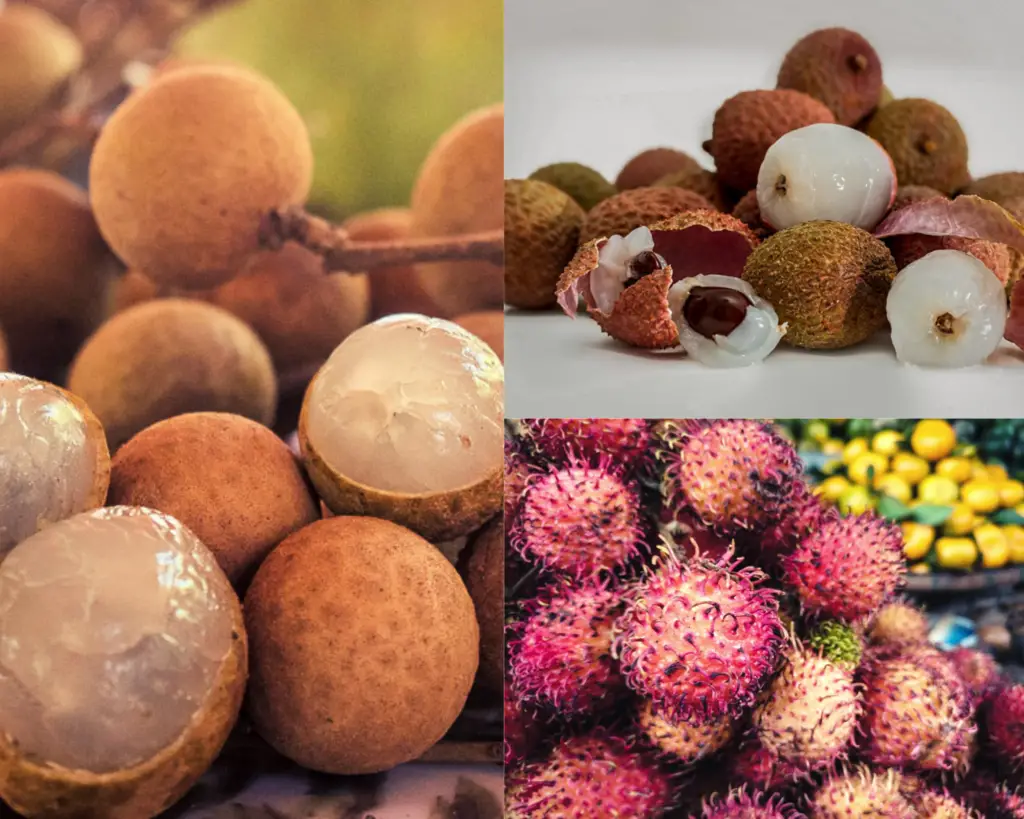
Rambutan vs Lychee vs Longan
What is the difference between these 3 delicious small round tropical fruits of Vietnam?
Pomelo (Buoi)
Pomelos are a close relative to the grapefruit but have a mellower and sweeter flavour. The size can be intimidating, however, they are easy to prepare to eat with some patience, with the juicy sweet flavour worth the effort. Read more about Pomelo vs Grapefruit.

How to eat Pomelo
The outer layer is removed by first scoring the skin with a sharp knife without cutting into the flesh (about a centimetre). The skin is then easily peeled leaving a whole fruit encased by a thin white pith. The outer pith is removed to leave segments, not dissimilar to an orange, as per the photo above. The flesh is then removed to be eaten and the seeds discarded.
Dragon Fruit (Thanh Long)
Dragon fruit is one of the stranger-looking fruits of Vietnam, with a thick fuchsia skin on the outside and a mellow tasting flesh inside. The colour of the inside edible flesh in Vietnam is usually white, however, in recent times the Thai dragon fruit has been introduced which has a red interior.
Dragon Fruit is grown extensively in the Mekong Delta as well as Vietnam’s south-central coast region.
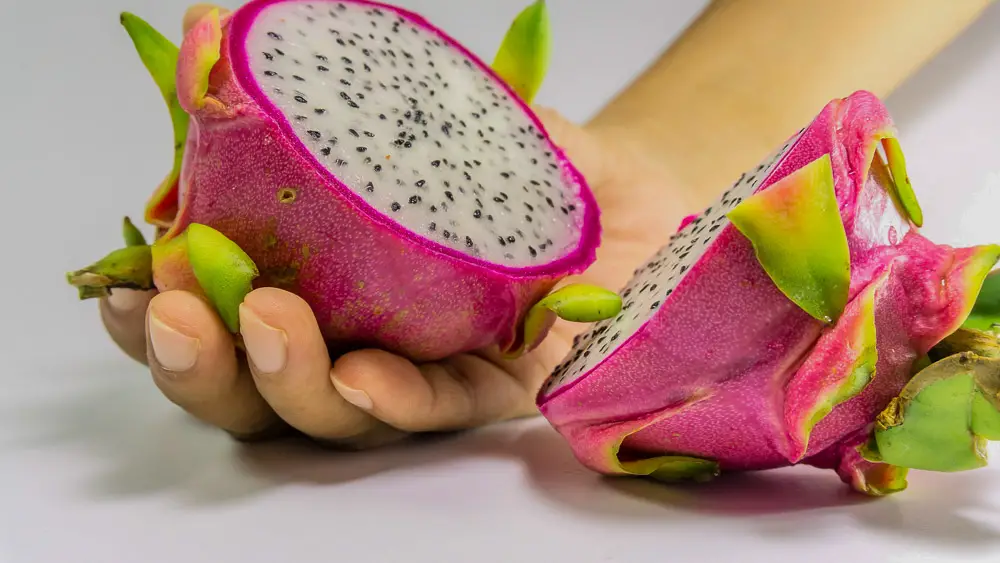
How to eat Dragon Fruit
Ripe dragon fruit has an even red colour and gives slightly when squeezed. Simply cut the dragon fruit in half and use a spoon to eat from the flesh, or remove the flesh entirely and use the fruit for several recipes.
Jackfruit (Mit)
Jackfruit can grow to be not only one of the largest Vietnamese fruits but also the heaviest and make for an impressive sight when displayed in fruit stands.
The green skin has a rough and lumpy texture with the edible flesh having a sweet taste with a gummy and fibrous texture that is slightly chewy.
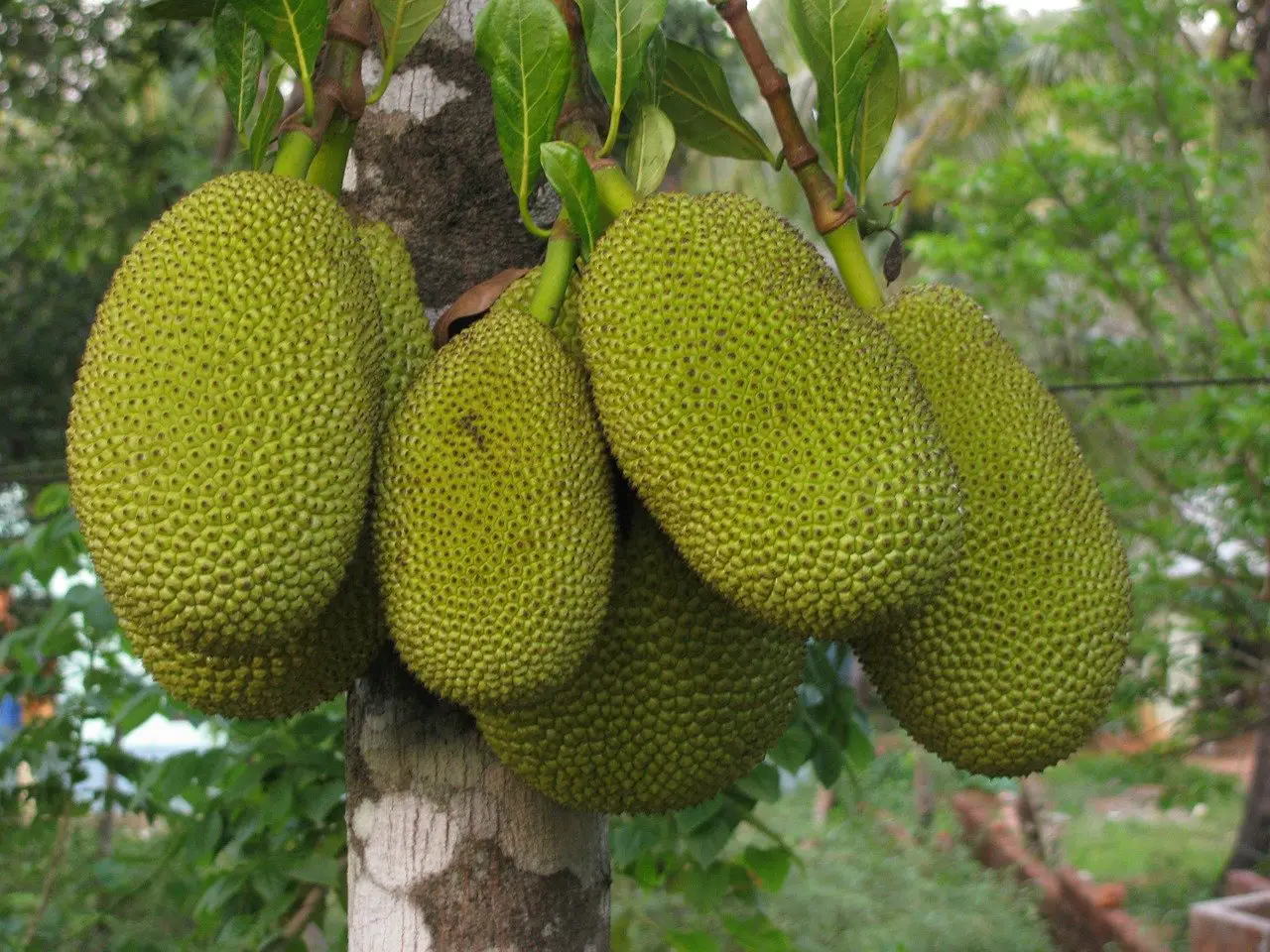
How to eat Jackfruit
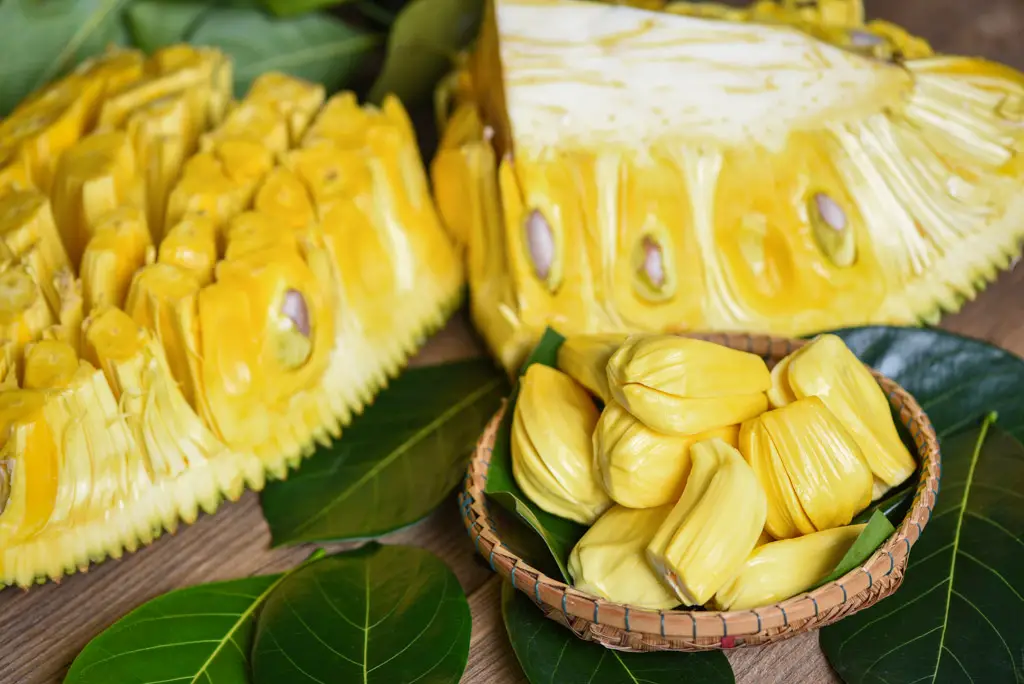
Preparing a whole jackfruit for eating can be an intimidating process, but with patience and a little care, is easily achieved.
If you have a whole jackfruit, the first step is to cut the jackfruit in half then into segments as per the photo above. The next step is to pry the individual yellow pieces away from the larger segment.
Inside each piece is a seed with a membrane that covers the seed. If prepared properly, Jackfruit seeds can be eaten.
Luckily, most shops selling jackfruit would have completed the whole job for you, with the small edible pieces sold separately.
Star Apple (Vu Sua)
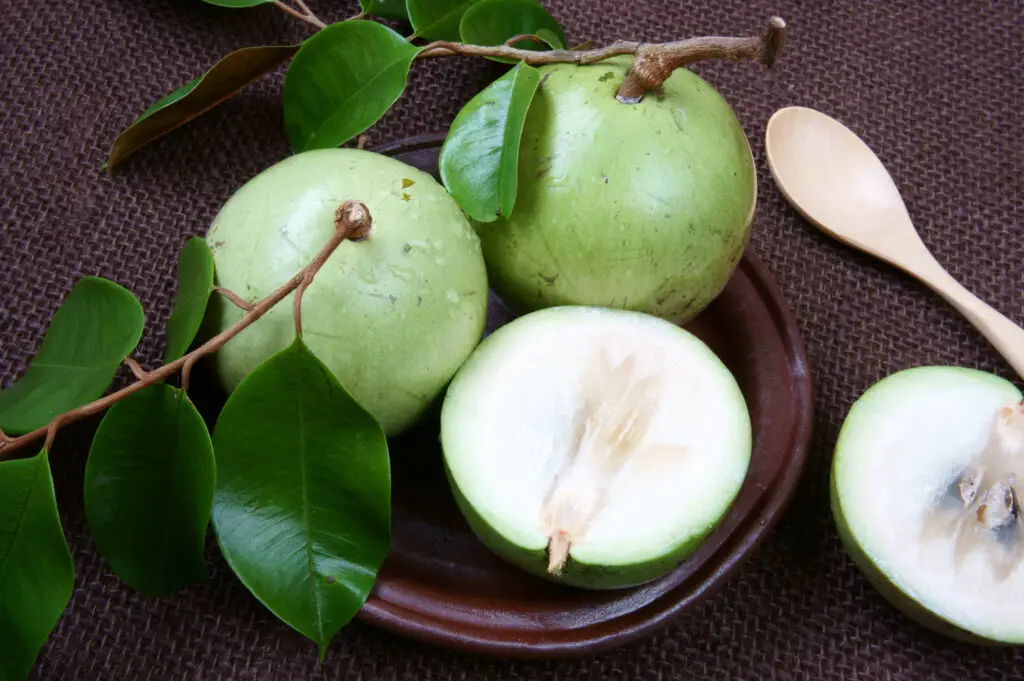
Although the star apple fruit, also known as milk fruit, is native to the West Indies, it is one of the Vietnamese fruits that is grown in many regions in Vietnam.
The Vietnamese name for star apple, vu sua, translates to “milk from the breast”, and the milk fruit is round and roughly the size of an orange, with tight, shiny skin in shades of purple and green.
The fruit inside is white and fragrant with a mellow sweet flavour.
How to eat Star Apple
The most common way to eat a star apple, or milk fruit, is to simply cut the delicious fruit in half and scoop out the white pulp. Discard any inedible seeds.
A delicious alternative is the decadently sweet star apple smoothie made with milk and condensed milk.
Mangosteen (Mang Cut)
One of the more exotic Vietnamese fruits, mangosteen has a thick purple skin and soft tangy flesh.
The season for mangosteens runs from May to August.
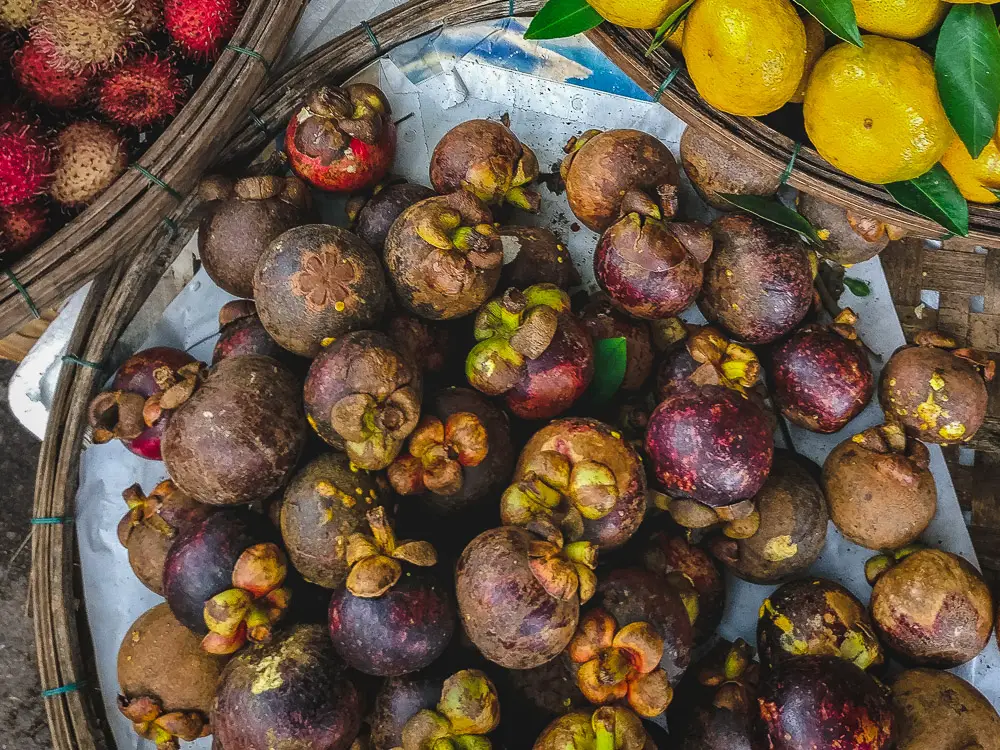
How to eat Mangosteen
Squeeze and twist the shell of this tropical fruit at the same time to reveal the edible fruit inside. Put the pod of fruit into your mouth and eat being careful to spit out any seeds the larger fruits may have.
Sapodilla (Sa Po Che)
Sapodilla is a relatively recent Vietnamese fruit, having been introduced from central America. Although sapodilla is grown throughout the country, the main growing region is centred in northern Vietnam.
Sapadilla is an oval-shaped fruit, with a brownish tanned skin when ripe, and has a juicy, malty, almost molasses-like flavour.
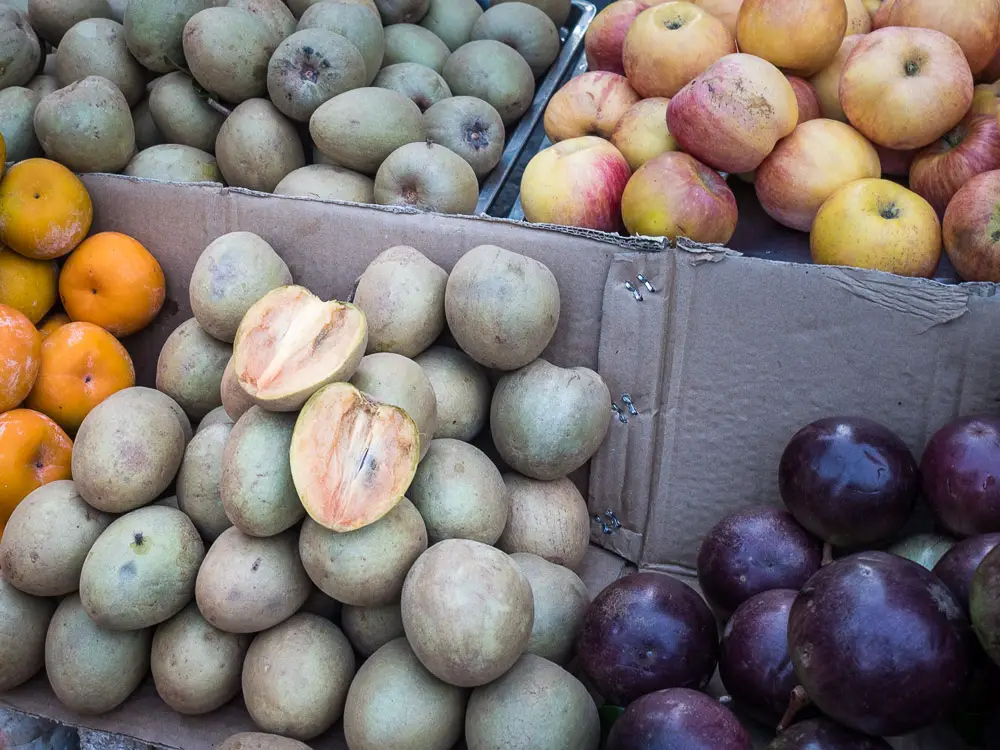
How to eat Sapodilla
Rinse the fruit before eating. Halve the fruit then eat the flesh from the skin. The pulp, once seeds are removed, can be used in a variety of dishes such as sapodilla smoothies or sapodilla pie.
Papaya (Du Du)
Papaya is a fruit of Vietnam that has several uses, from eating ripe as a juicy and sweet-smelling fruit to using unripe versions to make a range of salads and soups.
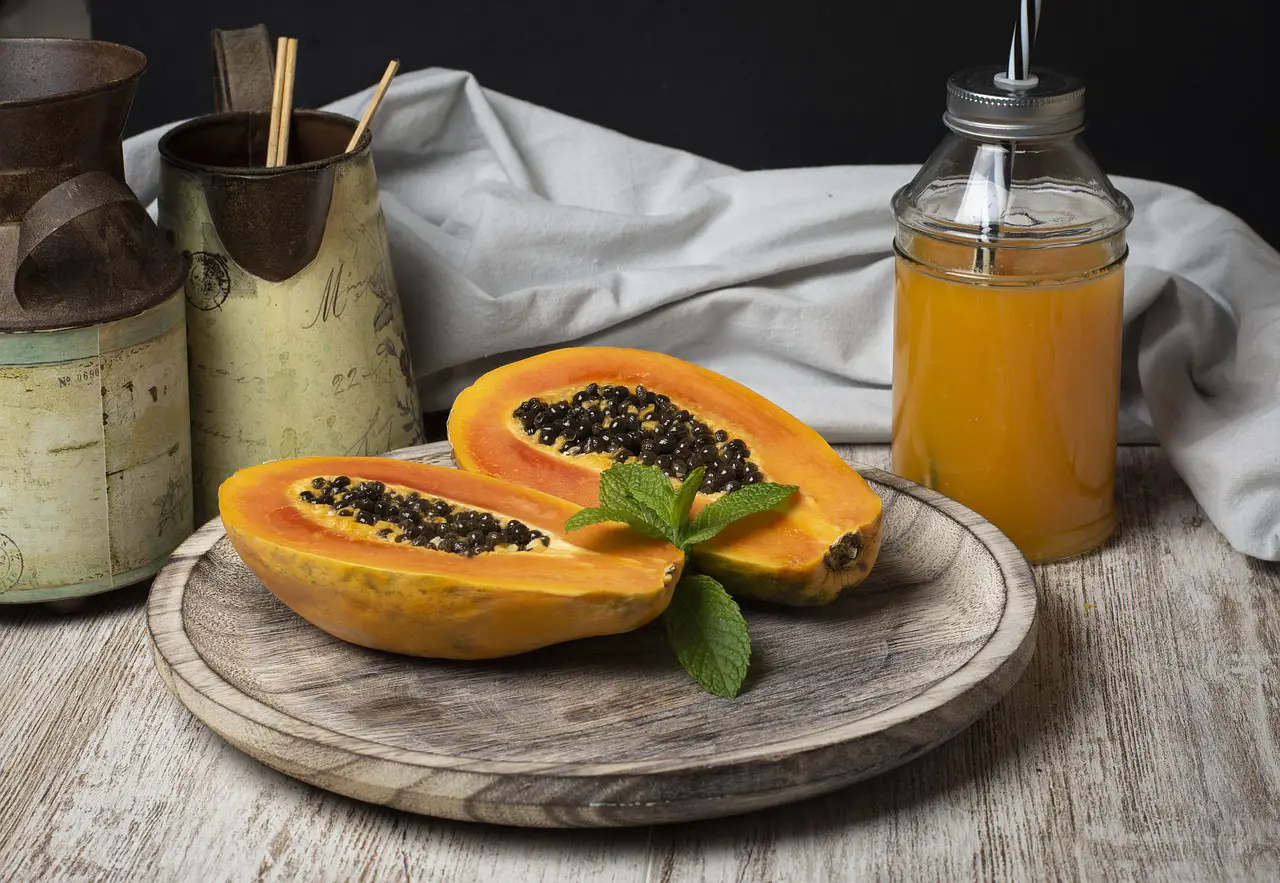
How to eat Papaya
For ripe papaya, simply cut in half and scoop out the orange flesh, discarding the seeds.
For unripe green papaya, peel and shred the white hard flesh, discarding the seeds.
There are many delicious papaya recipes, with a little known benefit of eating papaya for constipation.
Star Fruit (Trai Khe)
Star fruit is another exotic-looking fruit in Vietnam, with a refreshing, juicy, sweet and slightly sour flavour, a little similar to a grape.
The name comes from the star shape it makes once sliced sideways.
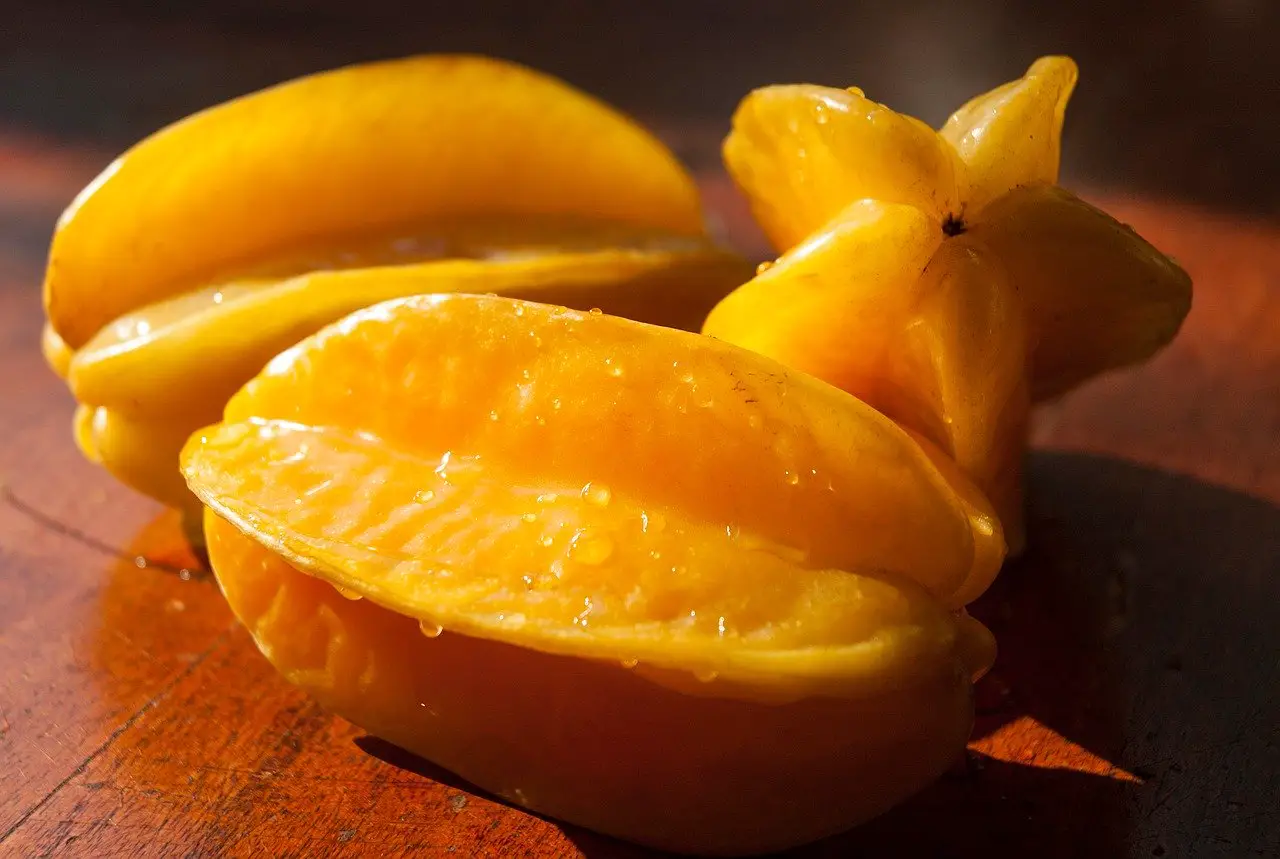
How to eat Star Fruit
These delicious tropical fruits can be eaten raw after thoroughly washing the exterior, or cooked to make relishes, preserves, fruit drinks as well as Vietnamese soups such as canh chua ca.
Guava (Oi)
The pear-shaped Guava has a light green and bumpy exterior, with a firm white interior, and is another one of the popular fruits in Vietnam, especially as a snack.
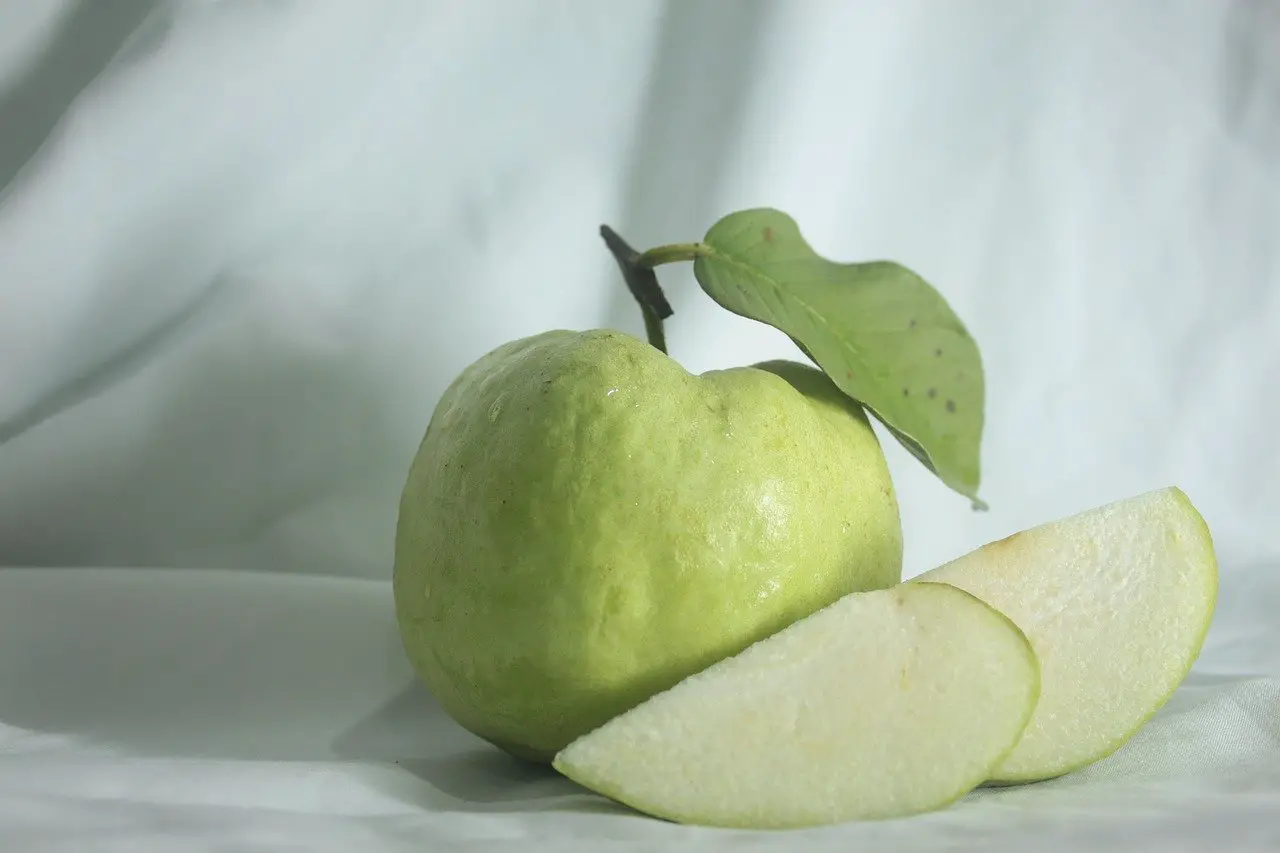
How to eat Guava
Vietnamese cut the guava fruit into chunks and dip it into chili salt (muoi ot). Guavas have a slightly acidic taste which matches well with a sharp and spicy seasoning.
Muoi ot, Vietnam’s addictive chili salt is usually sold as a dried mixture or made from fresh chilies.
Passion Fruit (Dao Tien)
Purple and roughly the size of a squash ball, passion fruit is a versatile fruit that can be used in all manner of desserts or eaten by itself straight from the shell. The edible portion, the seeds, are refreshing with a slightly tart finish.
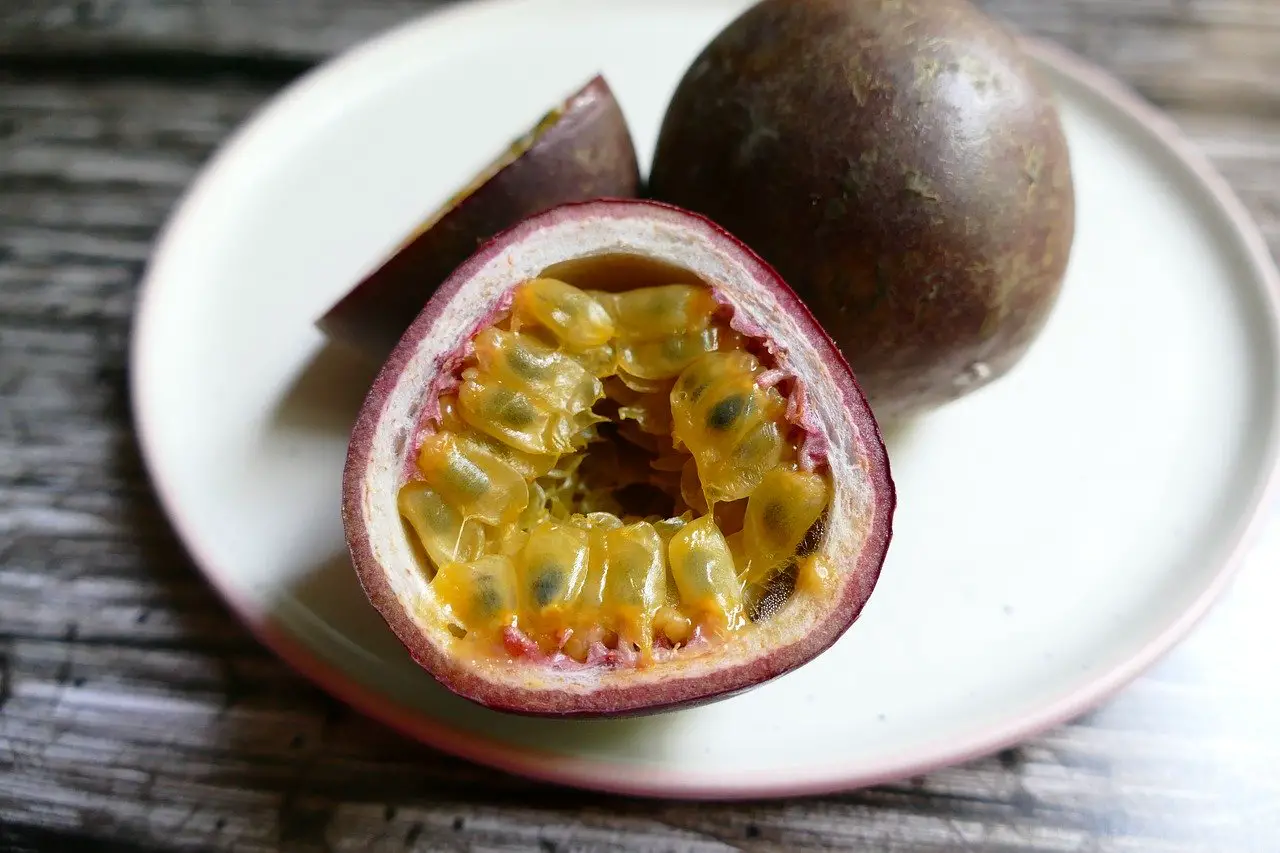
How to eat Passion Fruit
Passion Fruit can be eaten straight from the shell by cutting the exterior in half, and using a spoon to scoop out the gelatinous pulp and yellow and orange seeds. The pulp and seeds can also be used for making drinks and desserts such as passion fruit ice cream.
Durian (Sau Rieng)
Durian, known as the king of fruits, is probably Vietnam’s, and the world’s, most unique fruit as it looks and tastes like no other fruit, or even foodstuff.
The texture is custard-like, with the soft flesh melting in the mouth. The flavour is strong and the fragrance so powerful that many hotels ban guests from bringing durian into hotels.
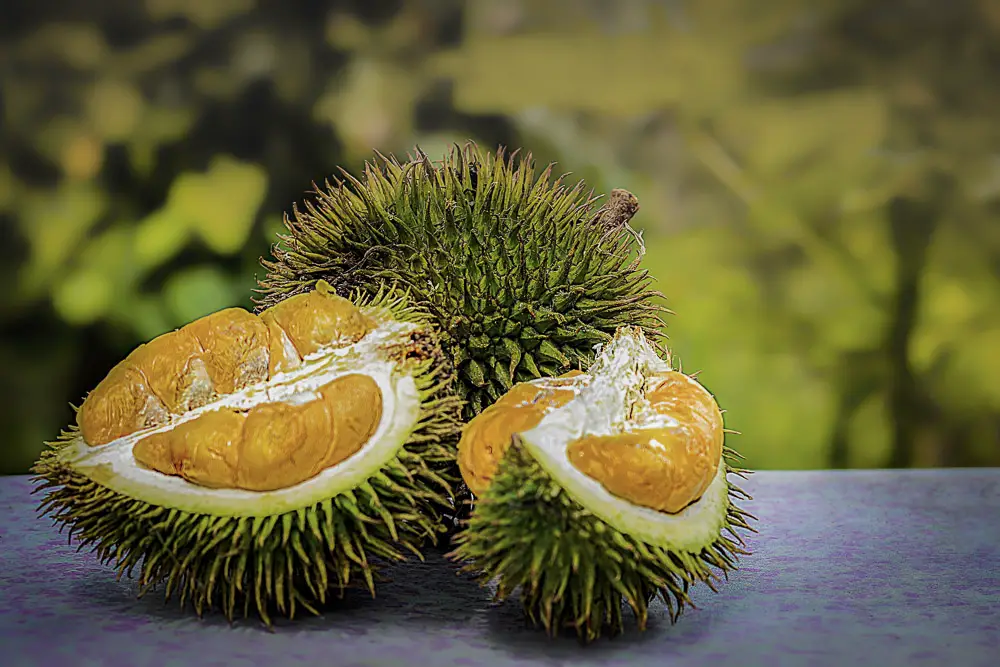
How to eat Durian
The edible part of the durian fruit is the yellow flesh that surrounds a seed. This part of the durian is in compartments inside the hard and spiky exterior.
The best way to access the yellow flesh is to have the durian vendor extract it for you. Experienced durian eaters can carve through the exterior to reveal the compartments of the unique fruit.
Durian can be eaten raw by itself or used in various recipes such as desserts and smoothies.
Rose Apple (Qua Roi in the north, Qua Man in the south)
The rose apple fruit is shaped like a bell and is one of the fruits in Vietnam available all year round, especially in the south. The rose apples have a crispy exterior with a tender and juicy interior similar to a melon.
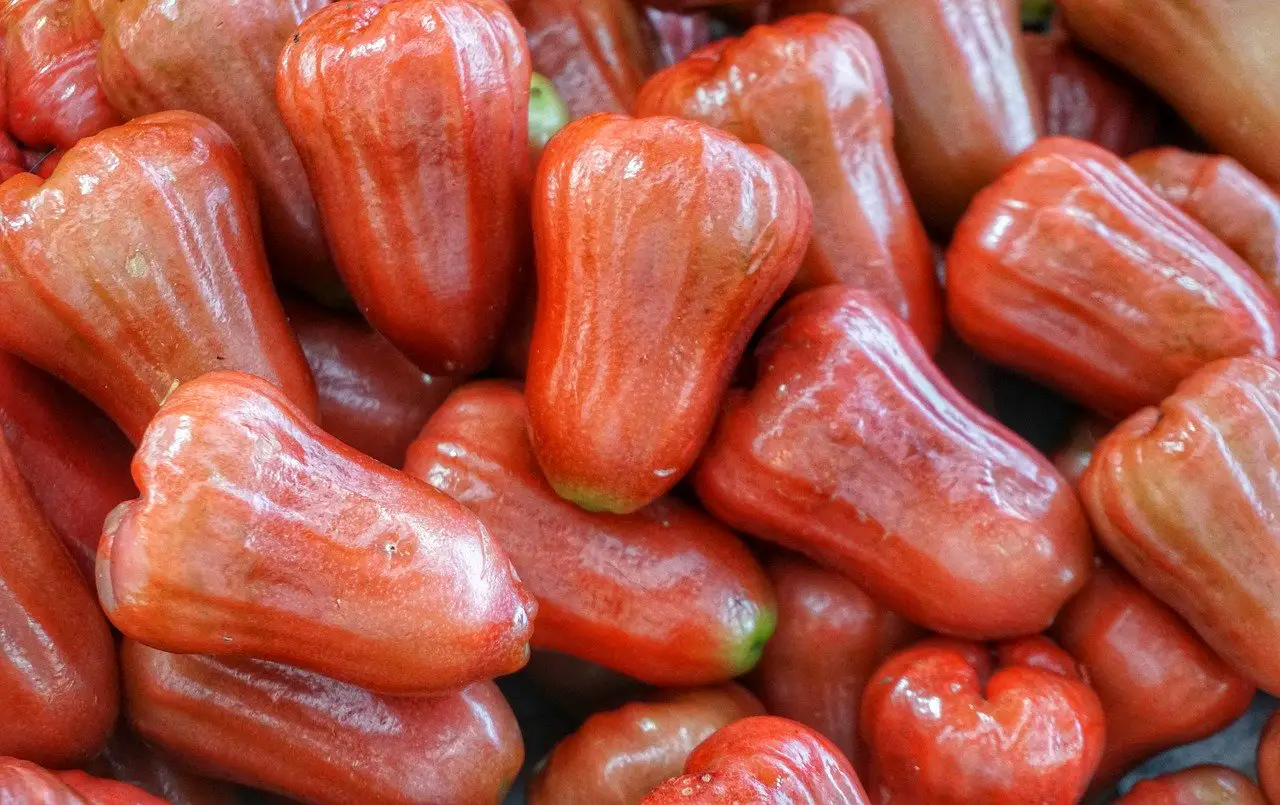
How to eat Rose Apple
After washing thoroughly, eat the rose apple skin and flesh around the interior core, just like an apple.
Mangoes (Xoai)
Vietnamese enjoy both the juicy, aromatic, sweet yellow flesh mangoes as well as the green mangoes which are generally used for salads and dipping chunks into chilli salt or a fish sauce dipping sauce.

How to eat Mangoes
Yellow mangoes are ripe when there is a slight give when squeezed and a fragrant aroma comes from the skin. To eat, slice the mango in half around the large seed inside. The flesh can then be extracted by a spoon. For a nice presentation, cut squares into the flesh then turn the half mango inside out as pictured above.
For green mangoes, peel the skin and cut it into chunks or julienne using a mandolin and use it as the base of the famous savoury green mango salad, one of my favourite salads using fruit in Vietnam.
Coconut (Dua)
Coconuts are grown all over Vietnam with the fruit being renowned for its versatility, with a large variety of uses for each part of the fruit.
However, if looking for something a little different, the Mekong province of Ben Tre produces a coconut, the Green Xiem coconut, that is so sweet that there is a unique and flourishing coconut candy industry built around it.
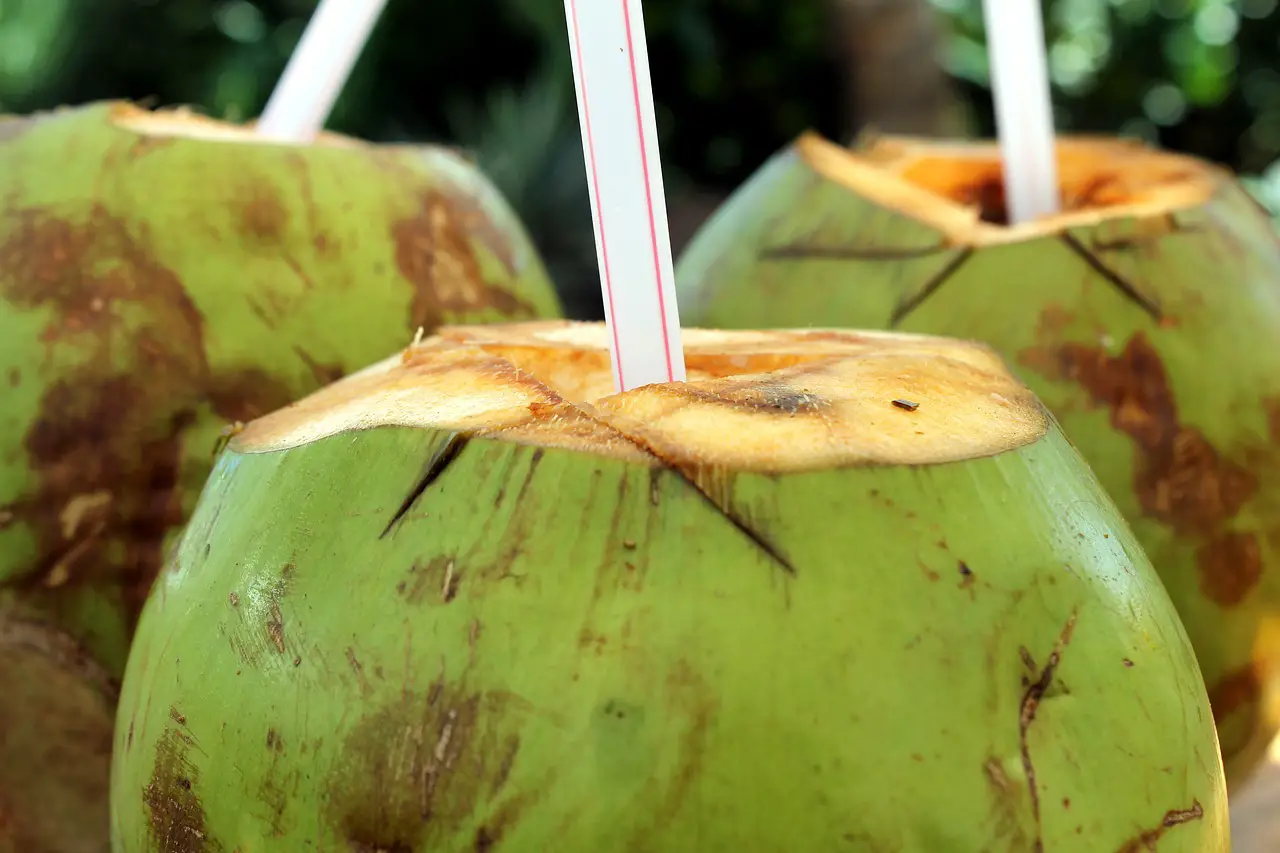
How to eat a Coconut
Coconut juice can be extracted by cutting a hole in the top of the coconut, and either pouring out the juice into a glass or inserting a straw to drink straight from the source.
Once the juice is removed, break open the coconut to reveal the edible flesh that is attached to the inside of the shell. The flesh can be easily removed using a knife, and once clean, can be used to make shredded coconut, coconut oil, coconut candy, coconut milk or cream, or coconut flour, and then used in any number of dishes.
Breadfruit (Sake)
The name breadfruit originated from the taste of the fruit when it is cooked – it tastes like freshly baked bread. The oval fruit is prickly on the outside, and firm and white on the inside. Breadfruit is a starch-rich food, so can be used in both savoury and sweet dishes.
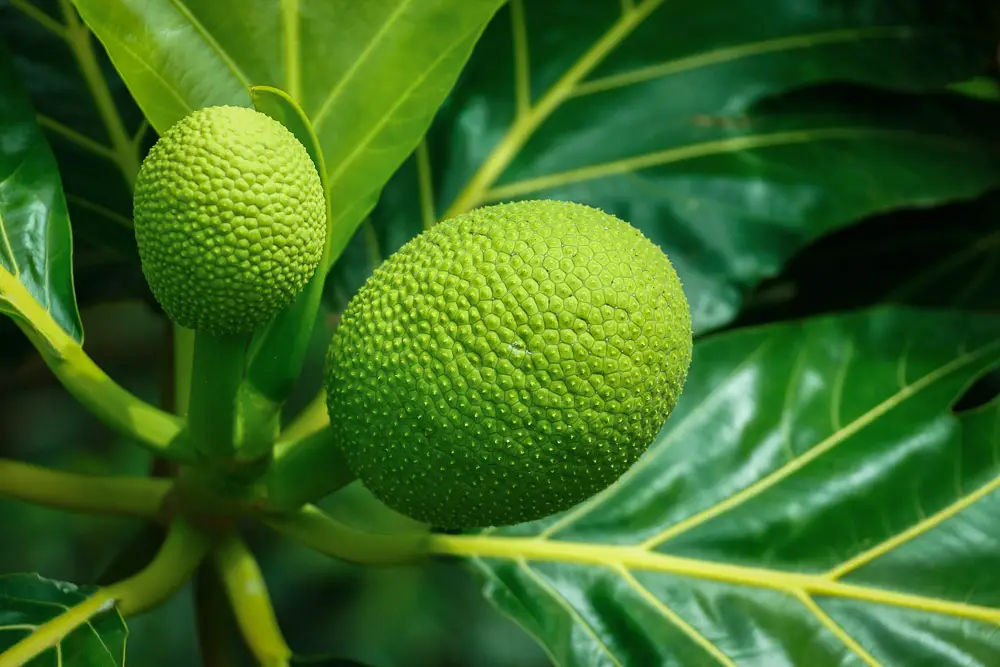
How to eat Breadfruit
After washing and drying the exterior of the breadfruit, simply cut it into 4 quarters and remove the inner core with a sharp knife. From there, the breadfruit can be steamed, boiled, mashed, or cut into thin strips for fries, similar to other starch-heavy foods such as sweet potatoes.
Pineapples (Dua in the north, Thom in the south)
With the tropical climate, pineapples are one of the Vietnamese fruits grown throughout the country with those grown in the south being larger and juicier than those in the north, which, in turn, have a stronger flavour due to their smaller size.
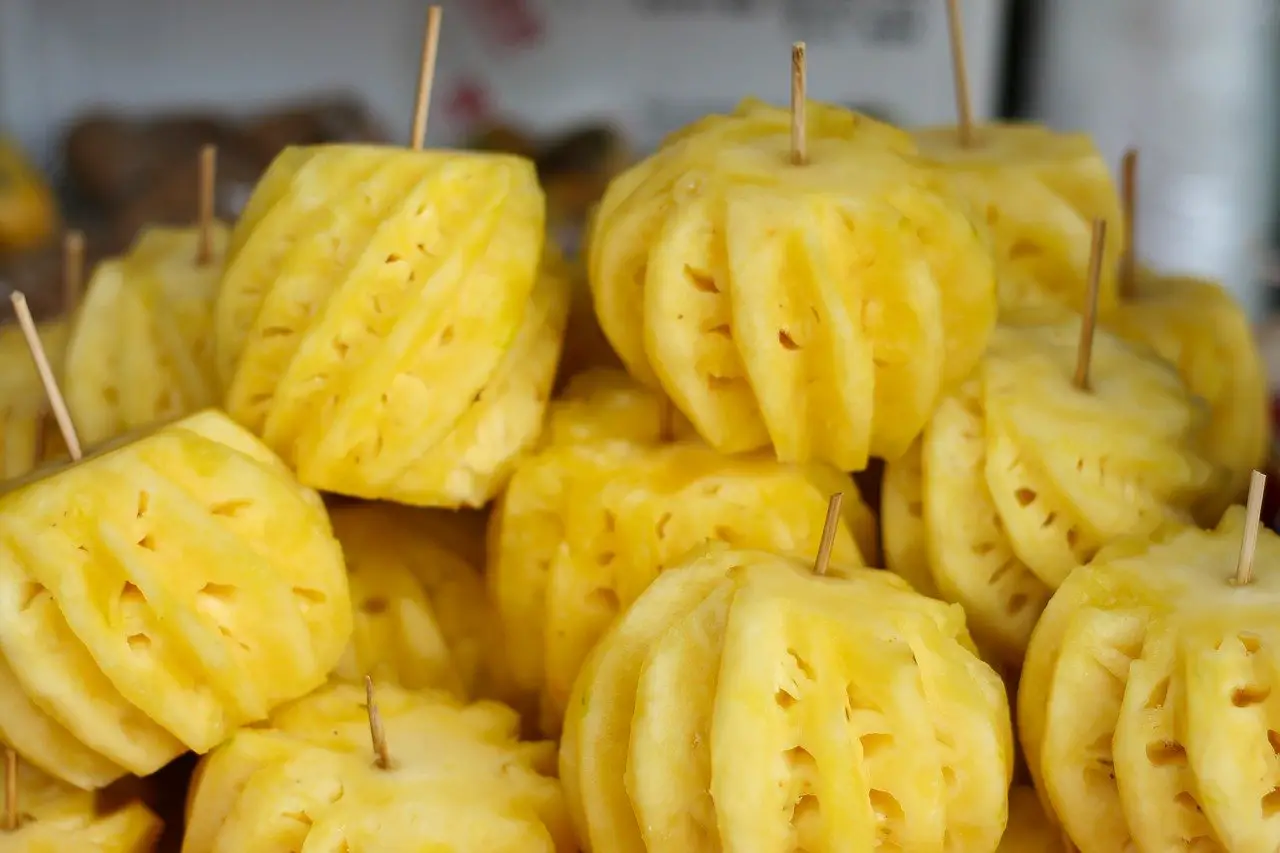
How to Prepare a Pineapple
A common sight at markets throughout Vietnam is pineapple vendors that carve the pineapples into edible pieces by carving out the inedible part in a circular motion. These vendors will generally sell juice, pineapple pieces, and the whole pineapple.
You can even make your own refreshing pineapple slushie with these sweet tropical fruits.
Soursop (Mang Cau Xiem)
Soursop, or custard apple, with a yellow-greenish exterior and white interior, has a sweet and sour taste similar to pineapple and is known for its medicinal purposes due to its being high in antioxidants, fibre, and vitamin C.
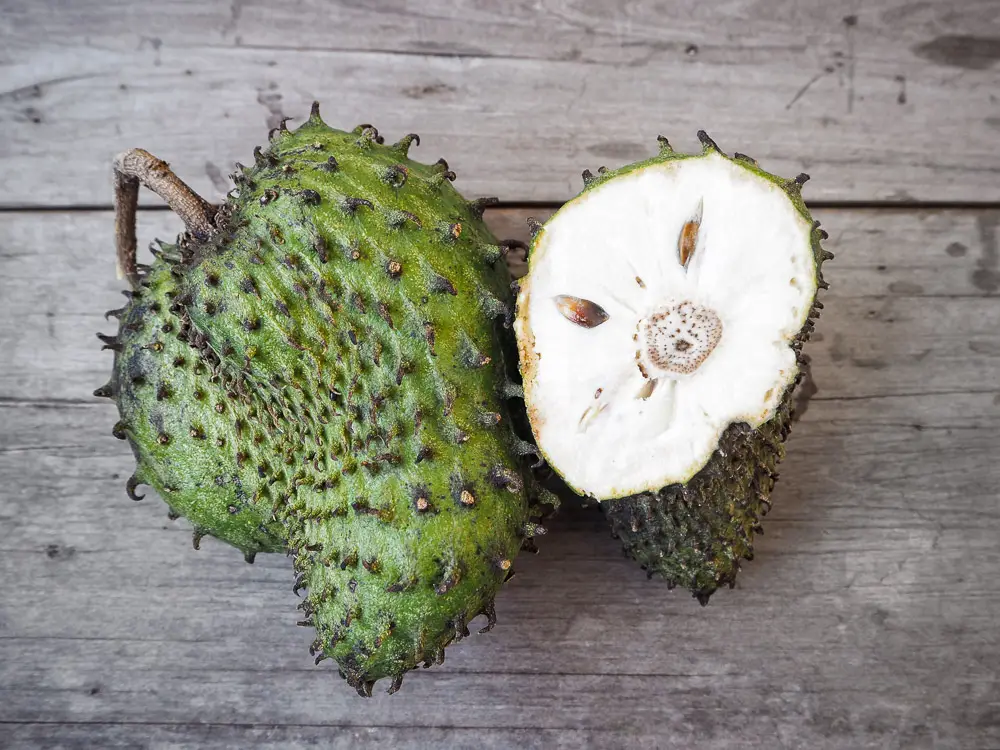
How to eat Soursop
Wash the skin of the custard apple then peel the skin as you would a banana. Although the skin is spiky, the spikes are not sharp and will be easy on the hands. Cut into quarters lengthways and remove the black seeds as they are toxic and should be discarded.
This delicious tropical fruit can be eaten raw, cooked in an oven, or used like pineapple and grilled on a barbecue.
Avocado (Bo)
Avocado was introduced to Vietnam by the French in the 1940s with current production centred around Vietnam’s central highlands and Mekong Delta regions, and although avocados are generally available much of the year, the main growing season is from May to July.

How to eat Avocado
The edible part of the avocado is the green flesh inside the fruit. The skin and the large seed are discarded. Avocados are one of the more popular Vietnamese fruits used to make smoothies. Avocado smoothies, Sinh To Bo, is made with the addition of ice and condensed milk.
Banana (Chuoi)
Bananas are another of the delicious tropical fruits that are grown all over Vietnam and are the most important fruit from a historical and economic viewpoint, with commercial production at over one million tons per annum.
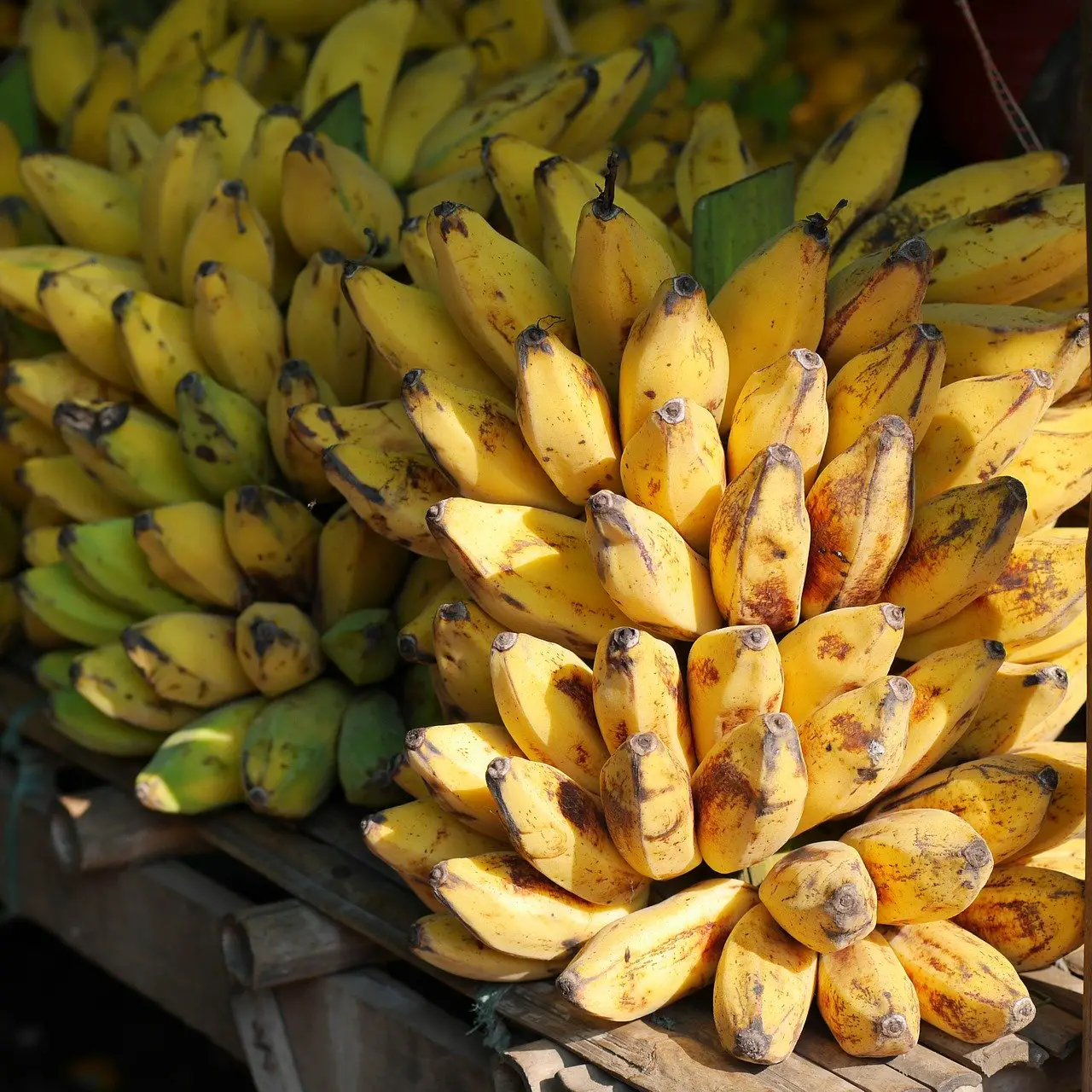
Edible parts of a Banana plant
Bananas are another Vietnamese fruit where much of the banana plant is used for food and food wrapping. Apart from the actual banana itself, Vietnamese use the banana flower and banana stem for salad ingredients, and the leaf for wrapping and serving foods.
Persimmon (Hong)
Although the persimmon is enjoyed as a fruit snack in Vietnam, it is also used as a festival fruit particularly for the lunar new year, Tet. They are also recognised as precious fruits and are sometimes presented as gifts to relatives particularly parents-in-law.
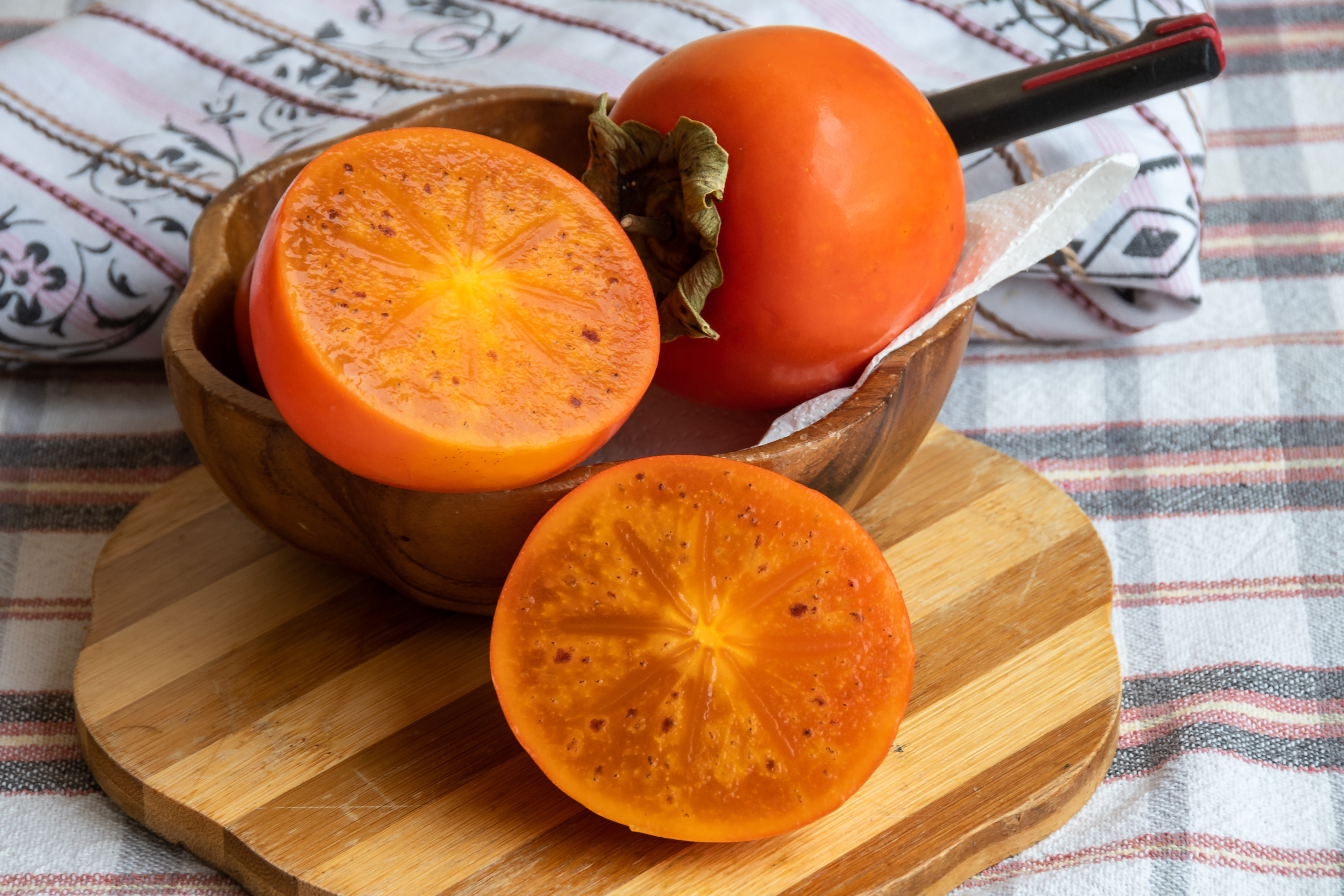
How to eat Persimmon
A ripe persimmon is orange/red. The fruit is first washed thoroughly and then cut into slices or wedges. A ripe persimmon is firm and crisp and has a sweet flavour. Discard any seeds.
Mandarin (Quyt)
Mandarin is one of the popular fruits in Vietnam with demand often outstripping supply, despite the fruit being grown in many regions throughout the country.
The main mandarin grown is orange in colour, with loose skin, and has a sweet flavour with a touch of tartness.
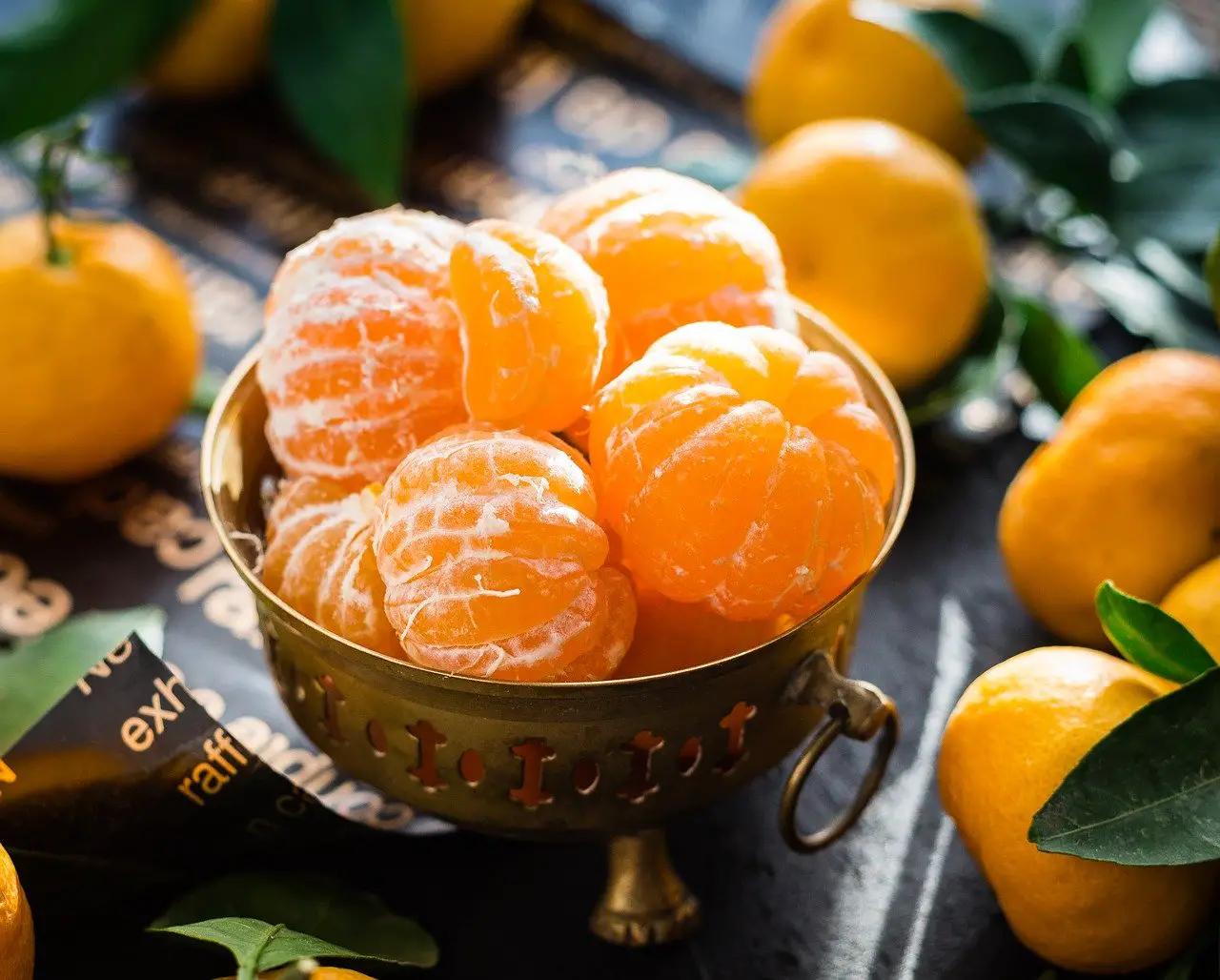
How to eat Mandarin
Simply peel the outer skin and eat the segmented interior, discarding any unwanted pith and small pips.
Soursop / Custard Apple (Mang Cau Ta)
Soursop is a popular fruit in Vietnam for its health benefits and is sought after during the relatively short main season of August and September.
The skin is light green and the inside pulp is white with black seeds that should be discarded.
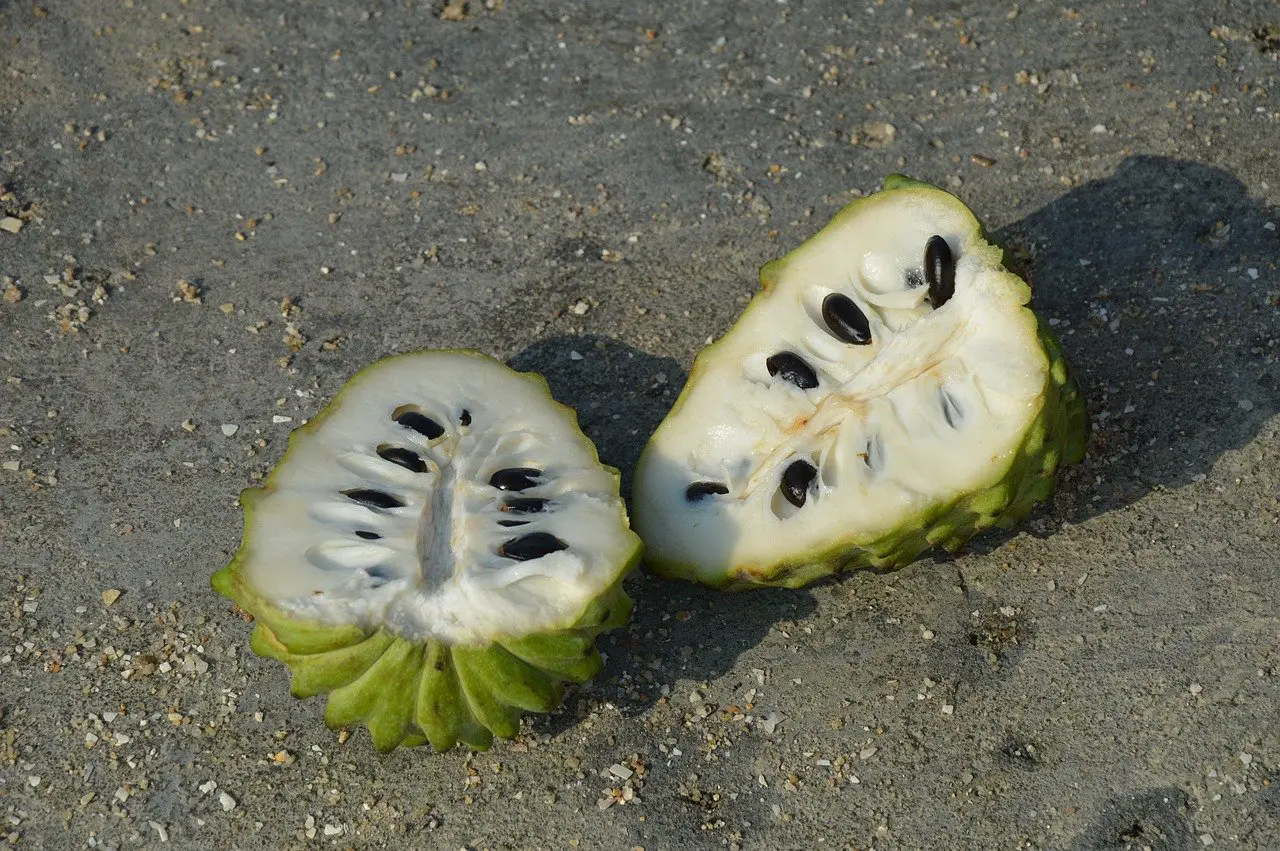
How to eat Soursop / Custard Apple
Peel the outer layer and eat the sweet and creamy white pulp.
Langsat (Bon Bon)
Native to south-east Asia, the small pale yellow Langsat is one of the least known Vietnamese fruits.
The langsat pulp is translucent and sweet and juicy when ripe.
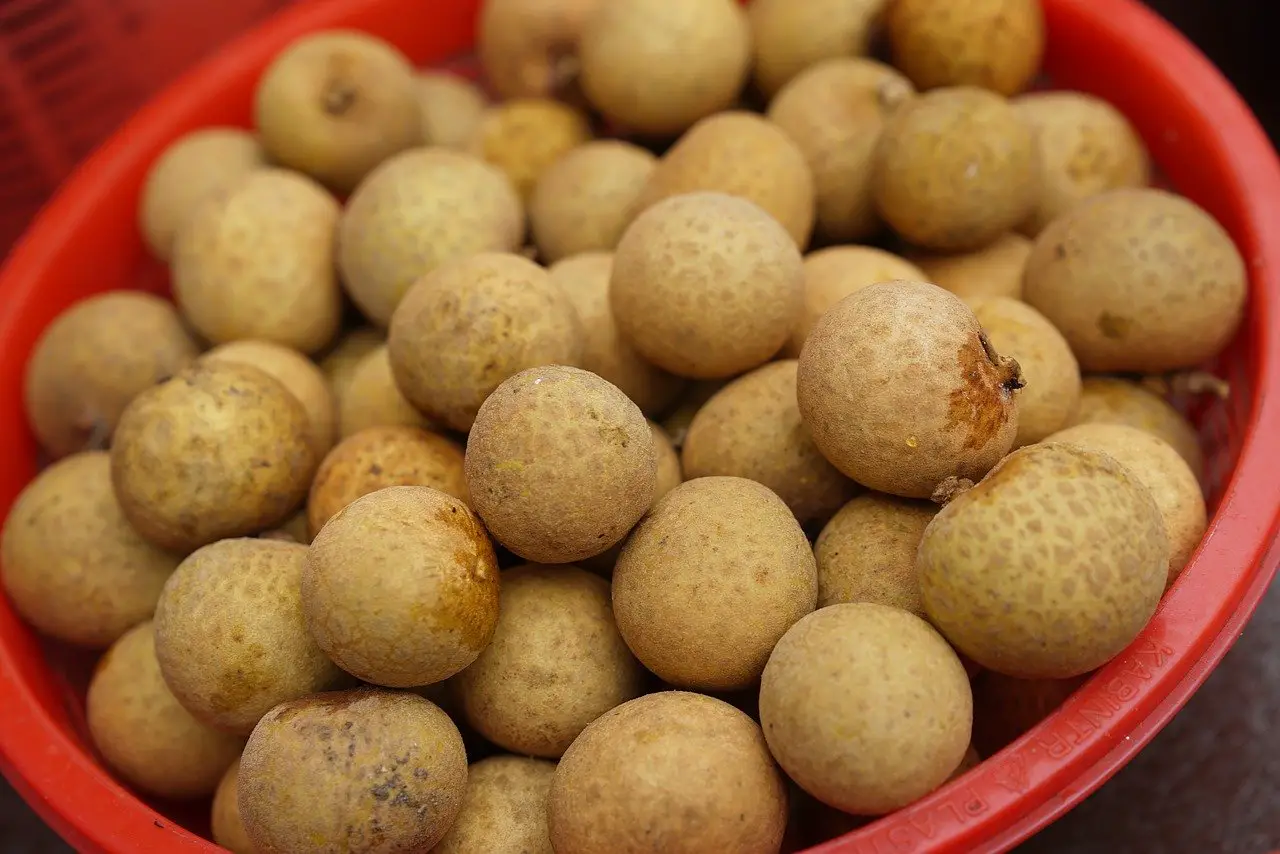
How to eat Langsat
Peel the thin skin and eat the sweet and juicy translucent fruit, discarding the seeds.
Orange (Cam Sanh)
The most popular orange fruit in Vietnam is not orange in colour, with a thick green skin on the outside. Inside, this citrus fruit is more recognisable with deep orange segments that are juicy and sweet.
Cam Sanh stands for terracotta orange
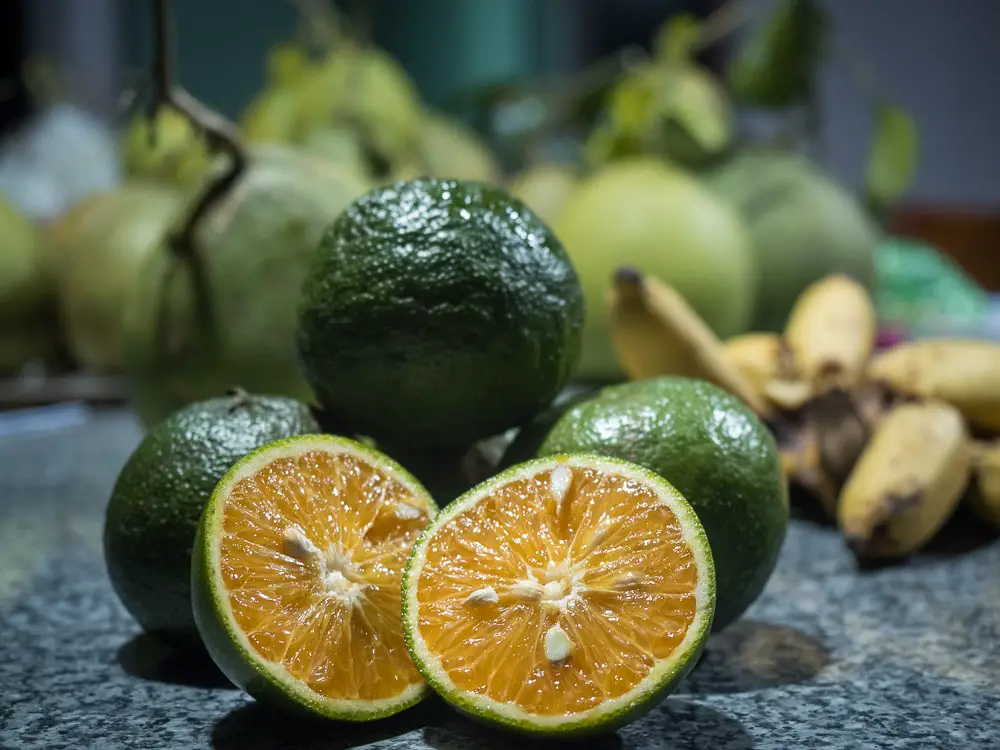
How to eat an Orange
Simply peel the outer green skin, segment the orange fruit and eat. Vietnamese oranges make great orange juice.
Conclusion to the Fruits of Vietnam
One of the easiest and most delicious ways to enjoy these delicious tropical fruits is to simply take a knife, slice them into pieces and enjoy their luscious, sweet taste straight off the cutting board.
If that idea is too simple, there are other creative ways to incorporate delicious fruit into your diet. Whip up an easy fresh yummy smoothie in minutes or try some unusual fruit combinations in salads or savory dishes. You can even bake with tropical fruits like pineapple by making a moist upside down cake. Any way you choose to eat them, enjoying tropical fruit is one of life’s simplest pleasures that never gets old!
I hope you enjoyed this list of tropical fruits of Vietnam and how to eat them. You also may enjoy:
- Vietnamese Breakfast Dishes
- Vietnamese New Year Food
- Flavors of Vietnam
- Tropical Fruits to Try
- 19 African Fruits You Need to Try
- 29 Yellow Fruits: Nature’s Golden Treats
Vietnam is a tropical country, so yes, Vietnamese fruits are also delicious tropical fruits. Among the more popular delicious tropical fruits are mangoes, papayas, coconuts, and dragon fruit. These are just some of the delicious tropical fruits that you can find in Vietnam.
Many exotic fruits come from different parts of the world, such as Asia and Central America. Some of these fruits are delicious and have a unique flavor that you cannot find in any other fruit. Other exotic fruits are not as tasty but are still interesting to try. Some examples of exotic fruits include durian, rambutan, dragon fruit, and lychee. Exotic fruits are often fun to try because of their unusual flavors and appearance.
Fruit is an important part of a healthy diet. Not only does it provide essential vitamins and minerals, but it also helps to promote gut health and protect against chronic diseases. For example, vitamin C is an essential vitamin that plays a role in immune function, wound healing, and tissue repair. Citrus fruits like oranges and grapefruits are good sources of vitamin C, but other fruits like strawberries and papayas are also high in this vitamin. In addition to vitamin C, fruit is also a good source of fiber, which can help to regulate digestion and prevent constipation.

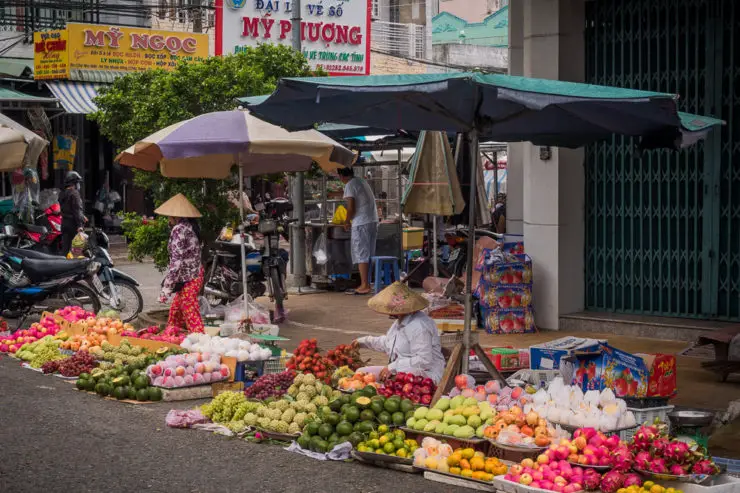
A bit bad but I always saw fruit in bad condition which is a shame because I do love eating fruit abroad and would have loved to in Vietnam while travelling last year. But thanks for this, I will have to prepare on my next trip!
Hi Nyasha, there is plenty of fresh and excellent fruit at local markets in Vietnam, and fruit shops in larger cities. The best fruit to eat is when in season, so avoid any fruits out of season, as they will unlikely be local.
Thanks for reading.
If I can write like you, then I would be very happy, but where is my luck like this, really people like you are an example for the world. You have written this comment with great beauty, I am really glad I thank you from my heart.